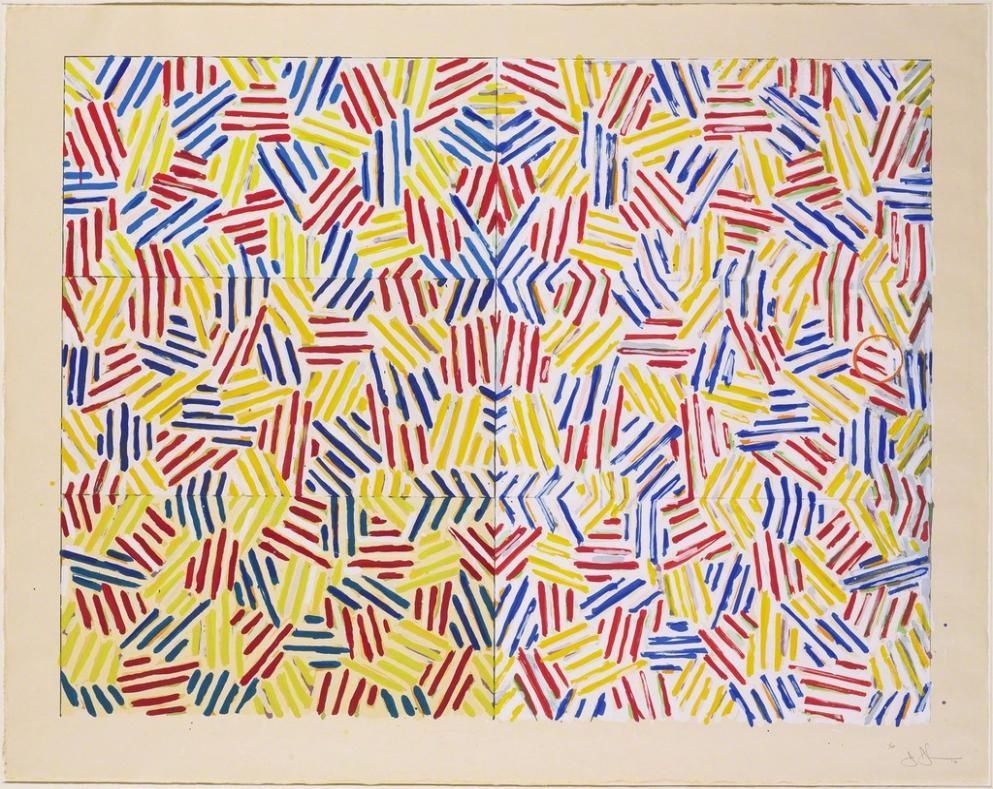

” The fact that he chose to do that with symbols of American national and political power and systems of enforced logic, like targets, numbers, and letters, was what made his work so potent. In 1964, he jotted his recipe for success in a sketchbook: “Take an object / Do something to it / Do something else to it. It also signaled a move away from the more gestural painting of Abstract Expressionists such as Willem de Kooning and Jackson Pollock. His work seemed to foreground process, or the making of art, with an almost eerie sense of detachment and anticipated movements like Pop art, conceptualism, and minimalism. Starting in the 1950s, his flags, maps, targets, and stenciled numbers and letters, many of which were rendered in encaustic (a mix of hot wax and pigment), explored the nature of representation, language, repetition, and meaning. The exhibition will also include previously unseen paintings, drawings, and prints, as well as new works completed within the last year.Īt various times, Johns has been described as America’s greatest, most prodigious, and most expensive living artist. Entire galleries will be devoted to restagings of two of Johns’s early shows at the Leo Castelli Gallery in New York, where some of those pivotal works were first unveiled. The Whitney and the PMA will present different programs connected by “chapters” that are built around loose themes and motifs and incorporate iconic works like his American flag and map paintings, bronze sculptures of objects like beer cans and lightbulbs, and a vast collection of monotypes and prints.

The exhibition will showcase nearly 500 pieces across the two institutions, with each museum exploring the Johns canon through“echoed” or “mirrored” lenses. Prints published by ULAE © 2021 Jasper Johns and ULAE/VAGA at Artists Rights Society (ARS), New York Robert Gerhardt, Denis Y. Whitney Museum of American Art, New York gift of the American Contemporary Art Foundation, Inc., Leonard A.

On September 29, “Jasper Johns: Mind/Mirror,” the most comprehensive retrospective ever of Johns’s work, is set to open simultaneously at the Whitney Museum of American Art in New York and the Philadelphia Museum of Art. “Most of the time was spent on a painting and a few drawings and a print that took more time than usual to resolve and is now, finally, being printed-I hope!” “I was able to work in the studio without as much interruption as typically occurs,” Johns says.
#JASPER JOHNS ARTWORK SERIES#
(In the 1990s, he had a rubber stamp made that said “Regrets, Jasper Johns,” which he’d use to decline invitations and requests the stamp found its way into a series of works shown at the Museum of Modern Art in 2014 under the title “Regrets.”) During the pandemic, Johns took the opportunity at his estate in Sharon, Connecticut, to toil away unfettered on the multiple projects he always has going-or at least less fettered than usual. Johns has developed a Zen-like threshold for uncomfortable silences-a skill that, at 91, he has refined to an art in itself. He has just never been interested in the public parts of being an artist that involve submitting himself as a specimen for examination. He isn’t humorless in fact, he’s the opposite.

Johns has always been reluctant (and unwilling) to “explain” himself or his work. To say that Jasper Johns is ambivalent about having to discuss the intentions or meanings behind his art would imply that there is some part of it he doesn’t find distasteful.


 0 kommentar(er)
0 kommentar(er)
